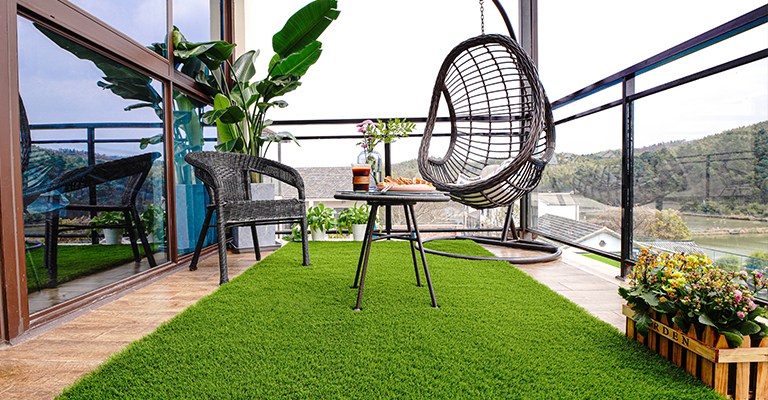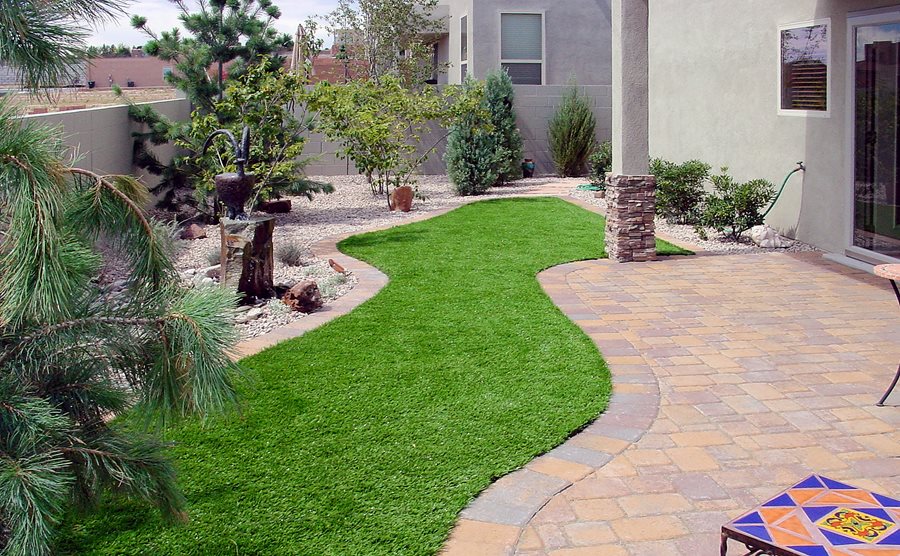See Why Homeowners Prefer Synthetic Grass for Sustainable Landscaping Practices
As house owners increasingly focus on sustainability in landscaping, fabricated grass has become an engaging alternative to conventional turf. Its ability to conserve water, minimize upkeep efforts, and lessen environmental influence positions it as a sensible selection for those looking for environmentally friendly options. Furthermore, the visual charm and adaptability of synthetic grass deal with diverse style preferences. The effects of this change extend past plain comfort and appearances, motivating a more detailed assessment of just how these selections influence more comprehensive ecological outcomes. What remains to be checked out is the complete range of advantages that synthetic grass can provide to homeowners and the environment alike.
Water Conservation Benefits
Among one of the most considerable benefits of synthetic grass is its role in water conservation. Standard yard yards need substantial quantities of water to keep their rich appearance, frequently resulting in overuse of neighborhood water resources, specifically in deserts. On the other hand, synthetic grass eliminates this need completely, as it does not call for watering. This not only saves water however additionally reduces the stress on local water supply, specifically throughout dry spell conditions.
Furthermore, the installment of fabricated turf can add to an extra sustainable landscape. House owners can substantially lower their water bills, permitting reallocation of sources to other ecological campaigns or household uses. Furthermore, artificial turf is created to stand up to numerous climatic conditions without the requirement for extra watering, making it an ideal selection for areas dealing with water shortage.
The environmental advantages extend beyond immediate water savings. By lowering water usage, synthetic grass aids to minimize the influences of climate adjustment, protecting vital environments that are endangered by too much water removal. As sustainable landscape design techniques acquire grip, synthetic grass emerges as a liable option for house owners looking for to develop environment-friendly outdoor areas.
Decreased Maintenance Initiatives
Synthetic lawn substantially minimizes maintenance initiatives contrasted to standard turf yards. With man-made yard, house owners can eliminate the time-consuming jobs linked with natural landscaping, such as mowing, feeding, and weeding. This not only conserves important time however also lowers physical labor, making lawn care accessible for individuals of any ages.
Among one of the most noteworthy advantages is the absence of routine mowing. Conventional grass need regular trimming to maintain an aesthetically pleasing elevation, whereas synthetic grass continues to be consistently lush without the need for reducing. Furthermore, homeowners no more require to use pesticides or fertilizers, which are often needed to keep all-natural lawn healthy and balanced. This shift not only lightens the work but also advertises a neater, extra uniform appearance year-round.
In addition, synthetic grass is long lasting and resistant, calling for marginal maintenance beyond periodic brushing and washing to get rid of debris. This simplicity of upkeep allows homeowners to enjoy their outside areas without the consistent worry of upkeep, offering more time for recreation and household activities. Eventually, the decreased upkeep initiatives associated with artificial grass make it an appealing choice for those looking for a low-maintenance, visually appealing landscape.

Ecological Impact Reduction
There is an expanding acknowledgment of the environmental advantages connected with synthetic grass, especially in regards to water conservation and reduced chemical usage. Typical lawns require significant amounts of water, particularly in drought-prone regions, causing boosted strain on regional water resources. In comparison, synthetic grass eliminates the Extra resources demand for watering, considerably minimizing water usage and promoting sustainability.
Additionally, traditional yard upkeep commonly entails the application of herbicides, pesticides, and plant foods, which can contribute to dirt and water pollution. Synthetic grass minimizes this ecological hazard by requiring marginal upkeep and virtually getting rid of the requirement for damaging chemicals. This not only enhances soil health yet also safeguards local ecosystems from harmful drainage.
Additionally, the manufacturing of all-natural lawn lawns commonly involves using fossil gas for trimming and landscaping tools, more adding to greenhouse gas exhausts. By choosing artificial lawn, property owners can substantially reduce their carbon footprint connected with grass care tasks.
Aesthetic Allure and Convenience
Along with its environmental advantages, synthetic grass uses substantial visual allure and versatility for landscape design. Property owners can attain a lush, environment-friendly appearance year-round, eliminating the seasonal variations frequently related to natural grass. This constant visual not only enhances the visual charm of a property but likewise adds to a well-maintained and refined appearance.
In addition, synthetic lawn is readily available in a variety of structures, shades, and styles, enabling for customization to match specific preferences and design styles - Arizona turf. Whether used in property yards, industrial spaces, or leisure areas, it can flawlessly incorporate into varied landscaping layouts, from modern minimalist to lavish exotic settings
The adaptability of synthetic grass expands beyond plain appearance; it can be set up in numerous areas, consisting of rooftops, patio areas, and also interior areas, creating opportunities for special landscaping options. Furthermore, it is suitable for a variety of tasks, from youngsters's play areas to pet-friendly environments, offering capability without jeopardizing style.
Inevitably, the aesthetic appeal and adaptability of synthetic grass make it an appealing choice for house owners looking for lasting landscaping options that do not compromise appeal for ecological obligation.

Long-Term Expense Financial Savings
Among the most compelling benefits of synthetic grass is its capacity for long-term try this price savings. Unlike all-natural lawn, which requires normal upkeep-- including mowing, watering, fertilizing, and parasite control-- synthetic grass considerably lowers these recurring expenditures. Home owners can conserve a significant amount on water expenses, particularly in areas where water scarcity is a pushing problem. The removal of grass care solutions additionally adds to monetary cost savings, as there is no demand for specialized equipment or labor.
Additionally, synthetic grass has a life-span of 15 my website to 25 years, depending upon its high quality and use. This resilience decreases substitute prices, making it a much more affordable choice in the lengthy run. In addition, the preliminary investment in synthetic grass can frequently be recouped via the savings built up over time.
While the upfront price may appear higher compared to sod installation, the collective savings from minimized maintenance and water usage often exceed these initial expenses. Ultimately, the adoption of synthetic grass not just advertises a sustainable landscape design service yet additionally provides homeowners an economically savvy alternative that aligns with lasting budgeting objectives.
Conclusion
Man-made lawn emerges as an engaging choice for sustainable landscaping, offering significant benefits in water preservation, lowered upkeep efforts, and lessened environmental effect. As neighborhoods significantly focus on environmentally pleasant practices, the adoption of man-made lawn stands for a modern step towards attaining lasting and durable landscapes.
In addition, fabricated lawn is created to stand up to different climatic conditions without the demand for additional watering, making it a perfect option for areas encountering water scarcity. (Phoenix turf companies)

Artificial lawn emerges as a compelling alternative for sustainable landscape design, supplying significant advantages in water preservation, reduced maintenance efforts, and reduced ecological influence.